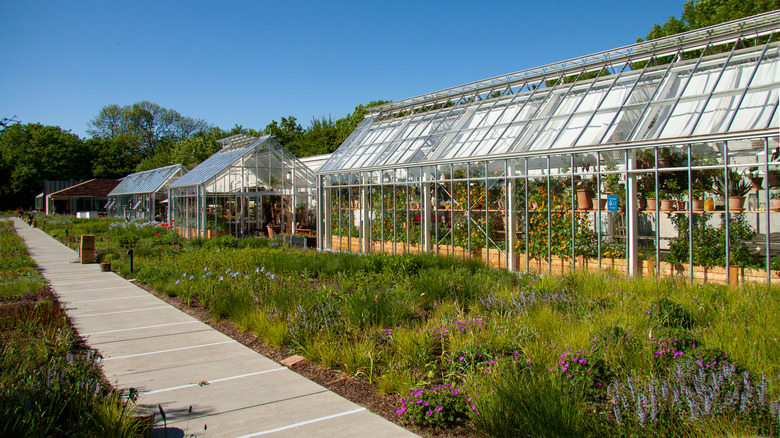What Is A Michelin 'Green' Star?
Michelin stars are widely regarded as the highest accolade in the culinary world, though it is a bit odd that a tire company would be seen as the ultimate arbiter of the global food scene. This strange fact can be traced back to 1900 when French brothers André and Édouard Michelin published their very first guide to restaurant and hotel ratings. According to Insider, the brothers hoped that their guide would pique people's curiosity, inspiring them to travel specifically to sample fine food. How would those intrepid diners make their journey? By car, of course, and by encouraging more people to hit the road, the Michelins hoped to increase the need for fresh sets of tires.
However, the system has received its fair share of criticism over the years, largely focused on allegations of elitism and a French bias. Writing for Vanity Fair, journalist A. A. Gill says, "the guide appears to be wholly out of touch with the way people actually eat," offering harsh words for "its limited scope." Indeed, Fine Dining Lovers notes that Michelin only publishes guides for 40 countries, ignoring Africa, Oceania, and much of South Asia and Latin America. Passing judgment upon literal matters of taste is naturally controversial, but Michelin has recently unveiled a new award with a more objective goal: the Green Star.
The Green Star rewards restaurants for sustainable practices
Michelin unveiled the Green Star award in 2020 with the goal of honoring restaurants that "hold themselves accountable for both their ethical and environmental standards." It is the fourth type of restaurant award established by Michelin. According to Insider, the first of these accolades is the aforementioned star system, which rewards restaurants up to three stars based on the perceived quality of their overall dining experience. A second award, the Bib Gourmand, was introduced in 1955 to honor more affordable restaurants, requiring the eatery to provide two courses, a glass of wine, and dessert for under $40. A third, the Michelin Plate, was introduced in 2018 with the rather vague aim of highlighting "restaurants where the inspectors have discovered quality food," but which do not qualify for a star or Bib Gourmand.
The creation of the Michelin Green Star highlights the role that the culinary industry plays in the global climate crisis. According to the United Nations, approximately one-third of anthropogenic greenhouse gas emissions are linked to food. These include methane from livestock, nitrous oxide from fertilizers, and carbon dioxide heightened by deforestation used to expand farmland. The most disturbing fact is that 8% of global greenhouse gas emissions are linked to food waste, with roughly one billion tons of food landing in the trash every year. Reducing waste is a top priority for Michelin when awarding Green Stars.
Over 400 restaurants have achieved Green Stars
Despite how new the award is, 426 restaurants have already earned a Michelin Green Star. According to Michelin, there are no strict criteria for achieving a Green Star, as each restaurant is evaluated based on regional conditions. Particular attention is given to where restaurants source their ingredients from and how they manage waste. Sustainable food typically entails farm-to-table dining, seasonal ingredients, organic produce, and regenerative farming practices. Michelin also focuses on waste disposal, recycling, and resource management to reward restaurants that minimize food waste. The organization specifically notes the reduction or removal of non-recyclable materials from a restaurant's supply chain as an exemplary quality of Green Star businesses.
Michelin's newest award also seeks to highlight the relationship between restaurants and their community. The guide emphasizes eateries that work directly with local farmers and fishermen or source ingredients from their own gardens. As an example, TimeOut cites California's famed French Laundry, a hub of the farm-to-table movement. Its use of solar power and an on-site garden played a big role in earning it a Green Star. According to Michelin, restaurants can also demonstrate community engagement through contributions to charitable and educational causes. For an organization that has sometimes been criticized for shortsightedness, Michelin's new focus on global welfare hopefully indicates a broader worldview in which the safety and security of the climate are just as valued as service and plating.


